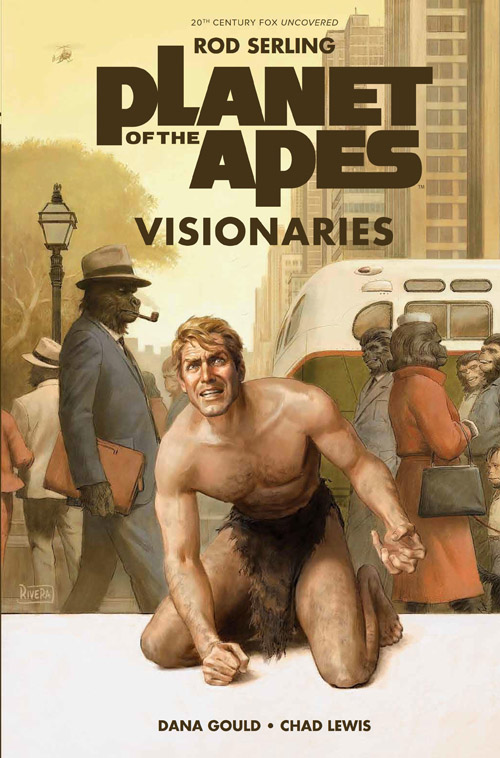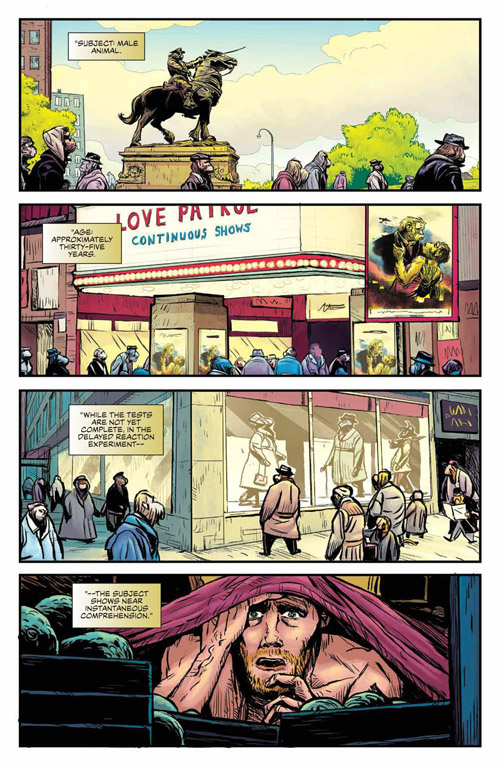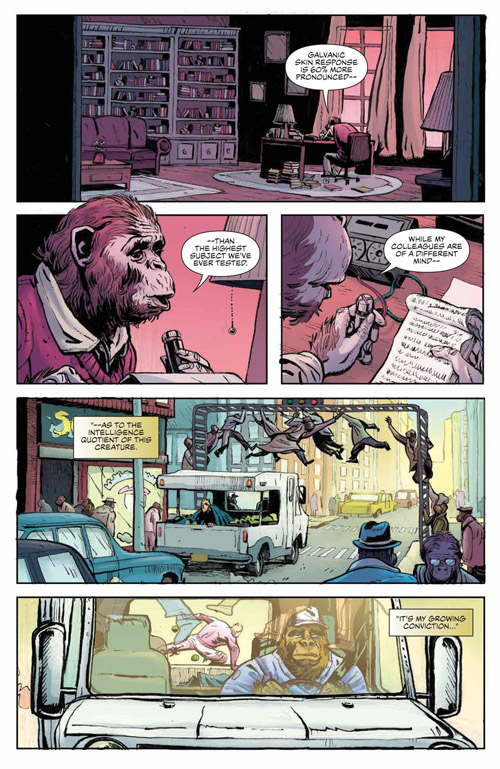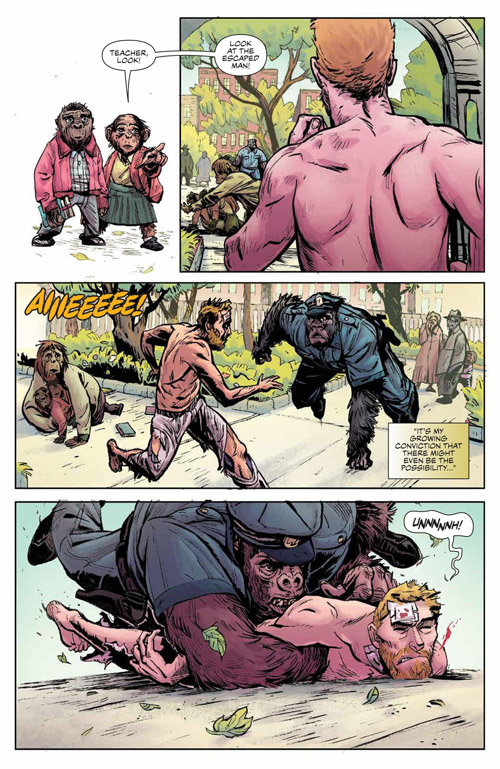An Alternate History With Serling's Planet of the Apes
Aug 16, 2018
by Vince Brusio
Rod Serling's name has long been synonymous with The Twilight Zone (1959 - 1964). His highly influential sci-fi television series took the anxieties of the '50s and '60s and examined them, inverted them, and provided viewers with an alternate view of the world around them. However, it is Sterling's early take on Planet of the Apes that may be his most fascinating parallel reality. Unearthed from the 20th Century Fox film archive. Serling original script for what would become 1968's Planet of the Apes film is finally getting adapted.
It's called Planet of the Apes: Visionaries (APR181091) and arrives in comic shops August 22nd. In this PREVIEWSworld exclusive interview, BOOM! Studios Editor Dafna Pleban explains how this upcoming graphic novel project came to be, the daunting task of adapting a script by one of the greats, and more.
**********
Vince Brusio: Give us the background on how Twilight Zone creator Rod Serling got to play in the Planet of the Apes sandbox. What was the year? Who gave him a hall pass? What were the circumstances for him getting the chance to interpret the property’s premise?
Dafna Pleban: Serling was the first person to adapt Pierre Boulle’s original novel to script, but the final shooting script was Michael Wilson. Serling introduced various key features that we’ve come to associate with Planet of the Apes now, that were not part of the original book -- the ending reveal that this was earth the whole time, for once, the image of the Statue of Liberty in the sand, for another. My favorite Serling contribution is the shot of the astronaut, mounted and stuffed in the museum -- it’s a heartbreaking, darkly comic moment, and one Serling had contributed in his first pass. Serling had been approached a few times -- once when the rights where held by the King Brothers, and later when Arthur P. Jacobs got the rights to the novel. His approach was more darkly pointed -- perhaps the world was better off without man in ascendence, considering how humanity brought it to the brink last time.
Vince Brusio: The solicitation for this book touts that it is a “never-before-realized Rod Serling screenplay.” So we assume Serling’s initial goal was to bring his vision to the silver screen. But were there any notes or annotations to Serling’s original script that indicated his ideas could be adapted to other mediums?
Dafna Pleban: Unfortunately no -- his script was always meant to be a film, however, what he wanted to portray, in his words, was too expensive to be shot at the time, and most likely lead to the script being rewritten into the form we know it today. As Rod puts it: “..the ape society was not in limbo as it was in the film. It was an altogether 20th-century technology, a New York city in which the doors and automobiles were lower and wider. All living was adjusted to the size of the anthropoid, but of course that was much too expensive to do.”
Vince Brusio: As Dana Gould is adapting a script from Serling’s original work, what were some of the early challenges on taking on such a project? Did some historical visuals or ideas get changed or discarded? Were there casualties of war?
Dafna Pleban: The best part of doing a comic is that you’re pretty much only limited to the artist’s imagination and artist Chad Lewis has a big imagination! We really were able to embrace Rod’s original vision -- a “modern” apes city uniquely adapted to Ape physiology and more alien for how minutely different it all is. We really embraced the Mad Men era that Serling was writing in, and the juxtaposition between our past with what is Thomas’ warped future really enhances the darkly comic underpinnings of Serling’s original script.
Vince Brusio: Burt Lancaster’s character is on the cover of the first issue, but in the pages supplied to PREVIEWS we get a glimpse of some other faces that play a part in this production. What was the most challenging part of your job as editor while you worked with Dana Gould on character development for this story?
Dafna Pleban: We really wanted to embrace what sort of casting options would have been available to Serling and the film at the time, and bring together a synthesis of what a leading man looked like back then. Artist Chad Lewis, with Dana’s direction, really found a perfect foil with all the handsomeness and charm of Burt and Heston and the vulnerability of James Dean, in the entirely new character of Thomas. Since his journey is so dark, we wanted to give him a place to fall from and I think the team captured it well!
**********
Vince Brusio writes about comics, and writes comics. He is the long-serving Editor of PREVIEWSworld.com, the creator of PUSSYCATS, and encourages everyone to keep the faith...and keep reading comics.









